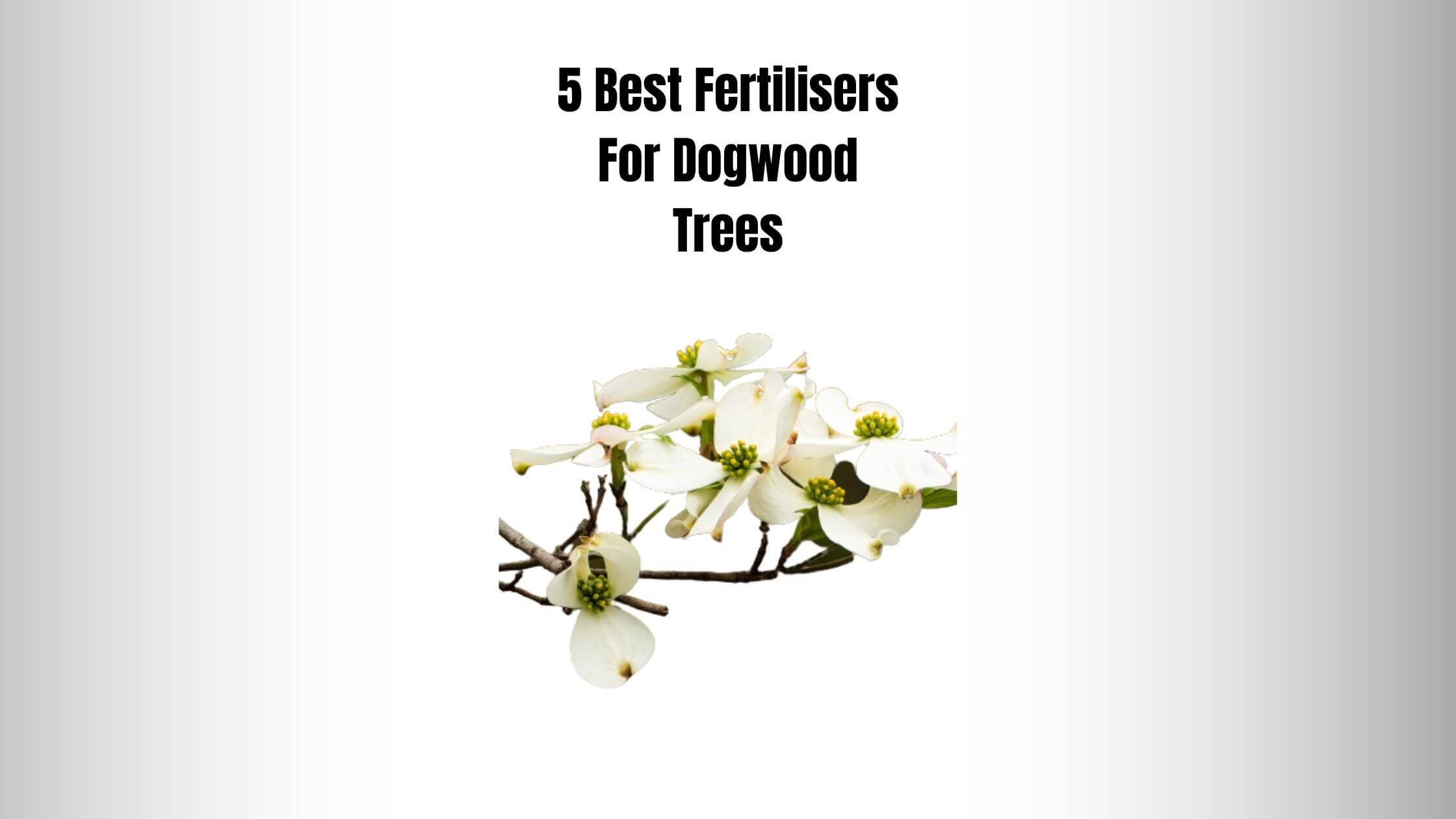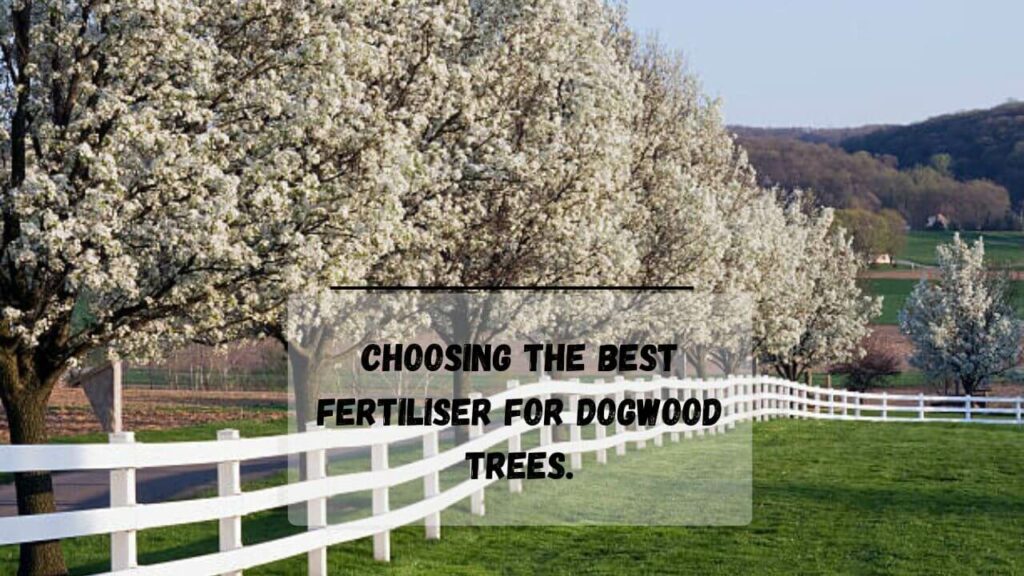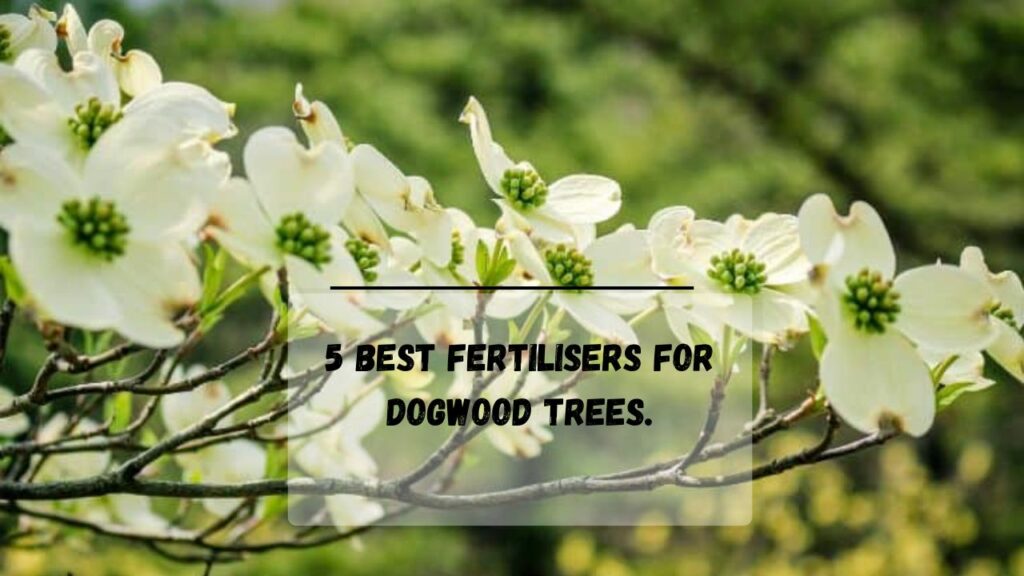
You are in the right place if you want to learn things to keep your dogwood trees healthy and thriving since Fertilisers For Dogwood Trees play a huge role not only in terms of development but also promoting their growth & longevity.
But many people ask: do dogwood trees need Fertilizer? If so, how much and when. Please don’t worry because, in this article, I will help you learn why they need Fertilizer and when not to fertilize dogwood trees.
This guide has the proper care and maintenance tips on fertilization to provide to your dogwood trees for optical growth and desired result. It would help if you learned many things to determine what factors affect the need for Fertilizer.
If you need to know why soil testing is essential before fertilizing, this article is for you. But I want to answer the most frequently asked question: why fertilize dogwood trees?
Why To Fertilise Dogwood Trees?
Like any other three, a dogwood tree will also require essential nutrients to grow and maintain its health. If you don’t provide proper nutrition and fertilization, that tree may become stunted while exhibiting yellow leaves with dark brown spots.
You will also notice your dogwood tree bearing less flower production. If you want to avoid this kind of issue, choosing the right Fertilizer for dogwood trees is essential.
Choosing The Best Fertiliser for Dogwood Trees.

Not all Fertiliser available in the market is suitable for dogwood trees soil. Not all fertilizers or also equally created. Choosing the right one to promote dogwood tree growth and longevity is essential.
Different types of fertilizers come with varying amounts of nutrients in the ratio of 3 primary nutrients: nitrogen, Phosphorus, and potassium. If the Fertiliser you have been using lacks any of these nutrients, you will notice nutrient deficiencies that may harm your dogwood trees.
Make sure to choose the right Fertilizer with a balanced mix of all essential nutrients that dogwood trees need to promote their growth and flower production. There are three scenarios when you should consider fertilizing your dogwood tree.
- Age: Younger dogwood trees require more nutrients to support their growth and establish a robust root system. Frequent fertilization will help them do so and increase their long tv. You will also notice younger dogwood trees blooming with lots of flowers due to proper fertilization and nutrient balance in its well-drained soil.
- Growing Condition: Any tree produced in a Sunny location will need more nutrients and fertilizers than those grown in a shaded place. Therefore, if you have planted your dogwood tree in an area with both shade and light, consider giving it more Fertiliser. The amount of watering and rainfall frequency also determine the need for Fertiliser.
- Soil Type: Since dogwood trees are known to perform well in healthy training slightly acidic soil, you should consider reducing alkaline levels to help the dogwood tree absorb essential nutrients properly. If you find, the ground is somewhat alkaline, consider increasing fertilization.
Before fertilizing any dogwood tree, you need to test the soil and determine its pH level and nutrient content. Only after knowing the earth’s pH and nutrient levels should you consider choosing the type of Fertilizer and the right amount to use.
When To Fertilize Dogwood Trees?
According to the rule of thumb, spring is the best time to fertilize dogwood trees when new growth occurs. This is when your dogwood trees will emerge from their dormancy and need the most energy to produce fresh flowers and leaves in bulk.
Not only is timing important when it comes to a fertilizing dogwood tree but also the sign its exhibits. You should notice signs like stunted growth, yellow leaves, or limited flowering if your dogwood tree needs fertilization.
I highly recommend you check for signs and fertilize dogwood trees properly to ensure they receive all nutrients in a balanced proportion. Since it is essential to choose the right type of Fertiliser to provide the necessary nutrients to promote healthy growth in plants, below after section, I’ve given the five best fertilizers for dogwood trees.
When Not To Fertilise Dogwood Trees?
After knowing the best time to fertilize dogwood trees, it is essential to know when not to do it. Since over-fertilization can damage just as not fertilizing, you should avoid overdoing it.
Over-fertilizing will cause salt buildup in the soil, harming the dogwood tree roots. It is better to avoid fertilizing in the summer month when the weather is hot. Instead, it would help if you considered fertilizing either in the spring or fall after the dogwood tree has finished Its growth cycle.
5 Best Fertilisers For Dogwood Trees.

1) 12-4-8 Fertiliser
This Fertiliser is widely available in local stores and is commonly used Fertilizer for dogwood trees. This type of Fertiliser comes with a nutrient content of 12% nitrogen, 4% Phosphorus, and 8% potassium.

Since nitrogen is responsible for promoting leaf growth and healthy green foliage, this Fertiliser will always benefit if used in the spring when new development occurs. Besides this, a high amount of potassium will also promote solid stems and overall plant health.
It is an excellent option to be used for dogwood trees in the spring season as it provides a balanced ratio of nutrients to promote new growth for top wood dogwood trees. This Fertiliser is also easy to find in most gardeners’ or hardware stores. Fortunately, it is available in a very affordable price range, and you can purchase it online even.
2) Holy Tone Fertilizer
Another popular option to fertilize a dogwood tree is Espoma Organic Holy tone fertilizer. This is specially designed for acidic-level plants, just like dogwood trees. Since dogwood usually thrives in well-drained, slightly acidic soil, consider using it in the fall when your dogwood tree has finished its growth cycle.

This Fertiliser contains essential nutrients that acid-loving plants look for. Dogwood trees also need nitrogen, Phosphorus, potassium, iron & sulfur, a key ingredient to treat the alkaline soil.
Once dogwood trees have finished their growth cycle, they will require a maintained acidic soil with an ideal pH range to continue growing and benefit from it for longevity. You don’t need to use holy tone Fertiliser in a significant amount.
Since it releases nutrients slowly within the soil, it is excellent to avoid fertilization over-fertilization. Also, this Fertiliser has an organic matter to improve the fertility of dogwood soil over time, making it a perfect choice for long-term use and dogwood tree care. It is more expensive than traditional fertilizers.
3 Other Recommended Fertiliser For Specific Dogwood Trees.
In addition to 12-4-8 Fertilizers and Holy tone fertilizers, there are many other alternatives available in the market and suitable for dogwood trees. Depending upon the type of dogwood tree, a particular fertilizer may benefit it.
Ideal Fertiliser for Kousa Dogwood Trees
Since the Kousa dogwood tree is an excellent ornamental tree that is pricey and known for its stunning blooms and attractive foliage, consider using Fertiliser specially formulated for this specimen will ensure optimal growth and health.
Make sure to use a type of Fertiliser that contains well-balanced essential nutrients, including Phosphorus, potassium, and nitrogen. If the soil quality is poor, I recommend adding organic fertilizers during spring.

Espoma, Holly Tone, and Fertilizer 4-3-3 are among the popular choices, and organic fertilizers come from a well-known brand suitable for this type of dogwood tree.
Fertilizers For Pink Dogwood Trees.
Since pink dogwood trees tend to be slightly shorter than any traditional dogwood tree specimen, it is better to use a slow-release fertilizer spike. Jobes dogwood tree and shrub fertilizer 16-4-4 are the best Fertiliser for pink dogwood trees.

It is simple to use. You need to insert it in the ground wherever needed and cover it with the soil. Make sure to know what the earth is before application.
Organic Fertilisers For Dogwood Trees.
In addition to the Fertiliser mentioned above, there are many different types of Fertiliser available in the market that are suitable for dogwood trees also.
Some of these fertilizers include organic fertilizers like compost, bone meal, and blood meal.
How to Fertilize Dogwood Trees?
Fertilizing a dogwood tree is very important to promote its growth and longitude. Fertilizing the tree soil will also encourage the dogwood to produce many colorful blooms.
If you are using liquid Fertiliser, I recommend you dilute it according to the manufacturer’s recommendation. Since liquid Fertilizers can be applied directly to the soil around the dogwood tree, make sure to use it in a required amount depending on the age & size of your dogwood tree.
According to the general rule of thumb, you should use only one pound of Fertiliser for every inch of a dogwood tree’s trunk diameter. You can also follow the manufacturer’s recommendation. Either way, you will be in a safe place.
If you are using granulated Fertiliser, consider spreading evenly using a fertilizer spreader or in the correct range around the dogwood tree’s trip line and water it thoroughly.
Since Dogwoods are prone to Pest infestations and diseases, it is better to fertilize than to fertilize it over. Therefore, be cautious when applying Fertiliser to dogwood trees. Here is a step-by-step guide to help you fertilize dogwood trees.
- Firstly, you should test the soil for nutrient contents and pH level to choose the right type of Fertiliser for your dogwood tree. It will also help you determine how much fertilization it needs.
- Based on the soil test, choose the best Fertiliser for the dogwood tree. For example, if the dogwood tree soil pH level is between 5.0-6.0, you need Fertiliser like Holly tone with higher acidity nutrient content. On the other hand, if the pH level is between 6.0- 7.0, you can choose a balanced fertilizer like 12-4-8.
- Firstly remove any grass or weed grown around the base of your dogwood tree.
- Now, create a shallow trench around the outer edge of the dogwood tree.
- Lastly, distribute the required Fertilizer evenly in the trench and cover it with the soil. After that, water it thoroughly to help the Fertiliser penetrate the ground effectively.
Conclusion
Fertilizing a dogwood tree will promote its growth and longevity and encourage them to produce lots of bloom in the spring & fall. It is recommended to use stable, nutrient-rich Fertilizers in the springtime when new growth occurs in dogwood trees.
If you have missed that window, consider fertilizing the soil in the fall when the dogwood tree has completed its development correctly. Prepare the ground properly and remove any grass grown around the ways of the trees.
Also, make sure to use the right type of Fertiliser in the recommended amount per the soil test. Since every dogwood tree will require different types of fertilization depending upon its age, variety of soil, region climatic conditions, and environmental conditions, you should check the soil for its nutrient content and pH level, testing it.
If you find this article helpful, then consider sharing it. Your share will help many people learn about the best Fertilizer for dogwood trees.
If you have any questions regarding any particular fertilizer for dogwood trees mentioned in this article, never mind dropping a comment below. Do check our other helpful guide on dogwood trees. See you in the next post, till then, take care and goodbye.
